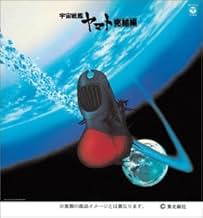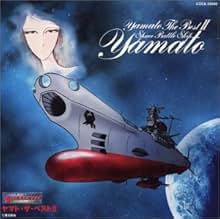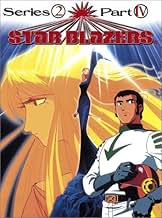Im Jahr 2199 muss ein Raumschiff eine gefährliche Reise zum fernen Planeten Iscandar und zurück antreten, um die Erde vor einer außerirdischen Invasion zu retten.Im Jahr 2199 muss ein Raumschiff eine gefährliche Reise zum fernen Planeten Iscandar und zurück antreten, um die Erde vor einer außerirdischen Invasion zu retten.Im Jahr 2199 muss ein Raumschiff eine gefährliche Reise zum fernen Planeten Iscandar und zurück antreten, um die Erde vor einer außerirdischen Invasion zu retten.
Handlung
WUSSTEST DU SCHON:
- WissenswertesInitially canceled in Japan due to low ratings, the series gained a new lease of life there after Star Wars: Episode IV - Eine neue Hoffnung (1977) was released.
- Zitate
[First season opening theme]
Chorus: We're off to outer space / We're leaving Mother Earth / To save the human race / Our Star Blazers / Searching for a distant star / Heading off to Iscandar / Leaving all we love behind / Who knows what dangers we'll find? / We must be strong and brave / Our home we've got to save / If we don't in just one year / Mother Earth will disappear / Fighting with the Gamilons / We won't stop until we've won / Then we return and when we arrive / The Earth will survive with our Star Blazers!
- VerbindungenAlternate-language version of Uchû senkan Yamato (1974)
- SoundtracksUchuu Senkan Yamato
by Isao Sasaki & the Royal Knights
Opening Theme
Looking at the coming attraction scenes made me realize that some editing was done in the last episode of the 1st season. In it, a Gamilon was rushing into the cargo bay where Nova was trying to activate the CosmoDNA (The Gamilon boarding party was using a radioactive gas) Starsha had given them and Sandor was protesting that it might not be safe. In the actual ep, Sandor and Nova both turn to see the Gamilon enter, but we never actually see him, and Nova ends up wounded for no readily apparant reason other than the aforementioned gas. I am certain that Sandor shot the encroaching Gamilon, but too late to prevent Nova from being hit.
There were several episodes where bodies were seen, if not the causes for their deaths. This marked it apart from anything else being shown 'for children' at this point. Considering that American animation seemed to be following the same rules that American comics were following (No death, sex, excessive violence, excitement, things of interest, plot development, etc) it isn't really a surprise that so many of us rushed home to watch it. (While at a meeting for my high school band, I came across several of the 'cool kids' singing the theme song together.)
In my area only the first 2 seasons were shown, but my wife reports that she not only got just the first, but it didn't include the final episode where they return to Earth, never mind the whole Comet Empire season. After hearing that, I didn't feel so bad about missing the 3rd season.
Just as a clarifying point for my faithful readers, though one of the crewmembers reported that Sgt. Knox had returned in another fighter, it was dubbed in. He died destroying the power center on the Comet Ship (In fact, none of the Marines they brought aboard survived the season). According to a later movie, Orion the engineer also died in the final ep of the 2nd season (Much to my sadness, I liked him). Also the chief pilot, Conroy died fighting the Comet Empire, but was replaced by his identical younger brother in the 3rd Japanese series, though the American series considered him to be the same character. (Nevermind that he was using a urinal when he spotted the Andremeda coming after them in the 2nd season's 5th episode. I wouldn't expect American TV to show that).
I hope that the various petitions are successful in returning Star Blazers to television. While there are several interesting animated shows, with the exception of Roughnecks; the Starship Troopers Chronicles, that are merely interesting, Star Blazers was actually engrossing.
Top-Auswahl
Details
Zu dieser Seite beitragen
























